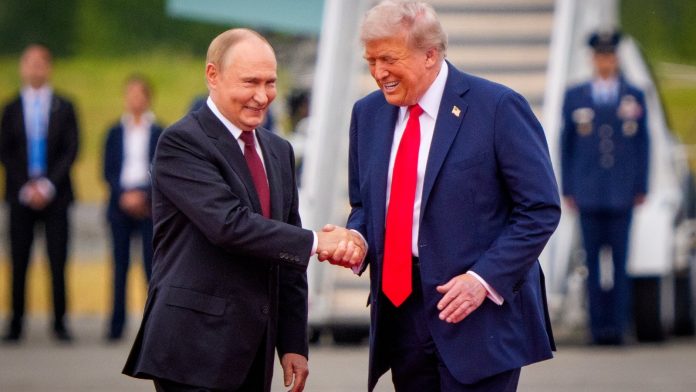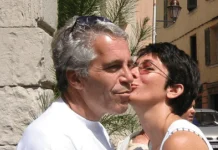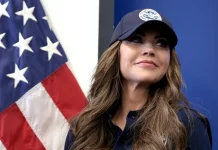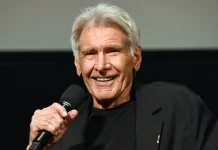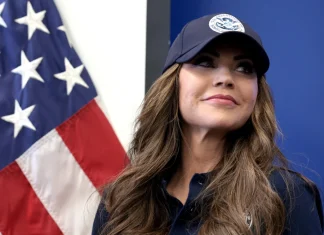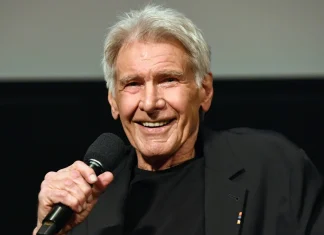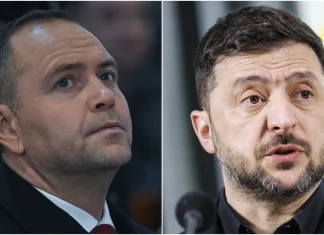When Giants Met on the Edge of the World: Putin and Trump’s Alaska Summit
In the frosty embrace of Anchorage, Alaska, beneath vast skies that seem to stretch forever, two world leaders—Vladimir Putin and Donald Trump—stood side by side. It was a moment charged with gravity and spectacle, unfolding on a stage as rugged and dramatic as the geopolitical tempests that bring such men together. The Joint Base Elmendorf-Richardson, an emblem of American military might nestled amid the breathtaking Alaskan wilderness, became an unlikely arena for a rendezvous that promises both hope and tension.
As journalists jostled for space, their cameras and notebooks poised like hunters, Annapurna, a local reporter marvelled, “This isn’t just a meeting between presidents; it’s a collision of histories, ideologies, and the hopes of millions across continents.” In many ways, this summit was not just about dialogue—it was about symbolism, the kind that speaks not only through words but through every handshake, every gesture, every carefully chosen backdrop.
Anchorage: From a Quiet City to the World’s Diplomatic Crossroads
Anchorage, Alaska, known for towering mountains, sprawling boreal forests, and a resilient spirit born from harsh winters with dark, endless nights, found itself in the global limelight. Here, Vladimir Putin’s visit stirred quiet streets and cafes, hawk-eyed with curiosity and underpinned with unease.
Pierce Nolan, who owns a bookstore downtown, reflected the local sentiment: “It’s surreal. One moment, we’re selling books and local crafts, and the next, the eyes of the world are on us. Putin walking around, signing autographs of sorts with the press—it’s like history was stopping in to have coffee.”
This meeting was more than a stopover; it was loaded with geopolitical meaning. Alaska’s proximity to Russia—just 55 miles across the Bering Strait—turns it into a vivid symbol of confrontation and, now, potential conciliation. The very place where East meets West, Cold War echoing in the icy wind, was reanimated by the present.
Moments Captured: The Personal and the Political Collide
The summit kicked off with an almost cinematic photo op: Putin and Trump beside a quirky “Welcome to Alaska” sign, their smiles as practiced as they were puzzling. Could a simple snapshot in this vast wilderness betray the serious stakes entwined?
Vladimir Putin later visited Fort Richardson National Cemetery, where he laid flowers on the graves of Soviet soldiers who had perished far from their homeland. It was a poignant gesture, connecting the past sacrifices of millions to the fragile present. Accompanying him was Archbishop Alexei of the Orthodox Church of Sitka and Alaska—a reminder of cultural and spiritual ties that transcend politics.
“This is not just about diplomacy; it’s about memory, identity, and respect,” Archbishop Alexei said quietly. “Here, in this distant land, these graves hold stories that must not be forgotten.”
Behind Closed Doors: Conversations about Ukraine and More
When Putin and Trump finally sat down, away from the flashes and crowd, the air was thick with unspoken anticipation. The major topic: Ukraine. A nation caught in the throes of war, its fate hanging in the balance as global forces wrestle for influence.
This conflict, often shaded by the propaganda of attending powers, resurfaced with brutal immediacy during talks. Protesters outside the base wove a tapestry of resistance, waving a giant Ukrainian flag, visible even from the sky. Their voices were a chorus demanding peace, justice, and sovereignty.
“The world watches us,” said Dr. Marissa Chen, a specialist in Eastern European politics. “This summit transcends mere diplomacy; it’s a litmus test of competing visions. Will power politics prevail or will dialogue forge a path forward?”
Trade, Security, and the Future of US-Russian Relations
Beyond Ukraine, the agenda was vast: cybersecurity, nuclear arms controls, economic sanctions, and the delicate dance of international alliances. The leaders shook hands—firm, calculated—each greeting a balance of assertion and diplomacy.
Donald Trump, stepping off Air Force One back at Joint Base Andrews in Maryland, reflected on the talks: “It was frank. It was real. We laid out our concerns, our hopes, and our paths forward. The world needs this kind of honest conversation.”
To many observers, the summit in Alaska was a reminder that global politics is never static but a living, breathing organism, shaped by the eloquence of leaders and the resilience of ordinary people caught in the crossfire.
What Does This Meeting Mean for the World?
As the dust settles in Anchorage, we’re left to wonder—what is the legacy of such moments? Can words spoken in fleeting hours in an Alaskan military base ripple out to change wars and mend fractured alliances? Or are they fleeting echoes in a continuing storm?
Perhaps the value lies in the humanizing glimpses: two leaders, far removed from the ceremonial trappings, meeting in a place that itself straddles the edge of the familiar and the untamed. A place where history’s cold winds still blow, reminding us that peace is never guaranteed, but always worth pursuing.
Questions to Ponder
- How do symbolic gestures, like Putin’s flower laying, influence perceptions beyond politics?
- Can diplomacy in unexpected places like Alaska usher in new hope for long-standing conflicts?
- What role do local communities play when global events unfold on their doorsteps?
This summit is not just for history books; it is a living chapter in the ongoing story of how nations relate, clash, and sometimes reconcile. For us, the global audience watching and wondering, it invites reflection on the fragile threads that connect us all.
Alaska, with its rugged beauty and enduring spirit, showed us that even at the edge of the world, the heartbeat of diplomacy pulses strong—and in that pulse lies the possibility of a better tomorrow.


